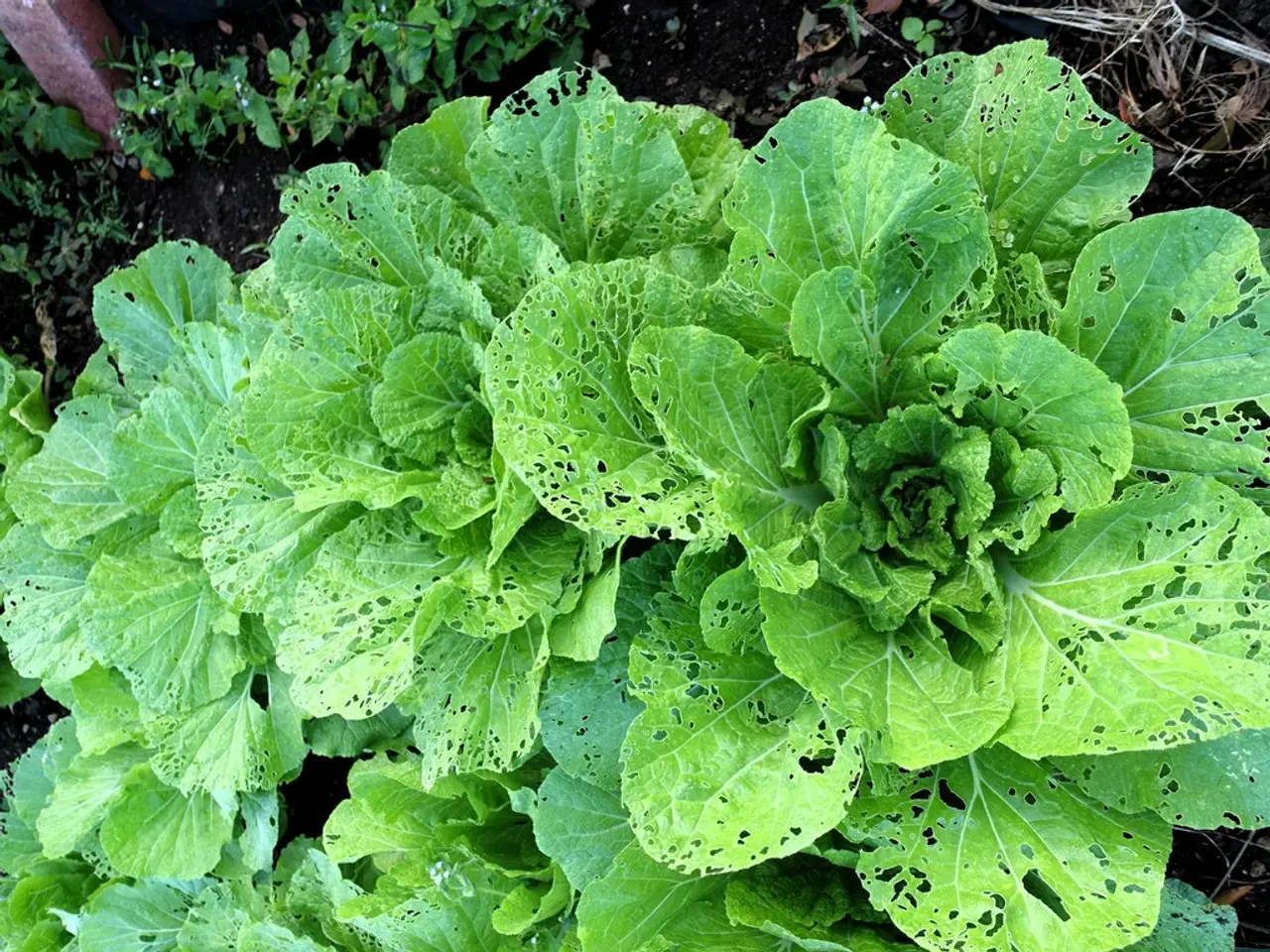Harvesting Spinach from the Garden: Ideal Moments for Plucking
In the world of gardening, spinach stands out as a versatile and nutritious leafy green. Here's a comprehensive guide on how to grow and harvest spinach for tender, flavourful leaves that are perfect for fresh eating or cooking.
Fertilising and Soil Preparation
To promote robust growth, use a balanced fertiliser like 10-10-10 to enrich the soil. Aim for nutrient-rich, well-draining soil with a pH between 6.5 and 7.0. Aeration is key for optimal growth, so make sure the soil is loose and fluffy. If it's compacted, use a broadfork to break it up.
Seed Sowing and Spacing
Sow spinach seeds about half an inch deep and space them about 2 inches apart. If you're growing multiple rows, keep them 12 to 18 inches apart.
Harvest Time Identification
Harvest baby spinach when the leaves are 2 to 3 inches long, and mature spinach leaves should be larger but tender. For cooked dishes, mature leaves are suitable. The best time to pick spinach is when it has five to six leaves, which usually happens about 37 to 45 days after planting.
Preventing Bolting
To avoid bolting, provide shade during hot days and ensure consistent watering. In cooler weather, spinach thrives at temperatures between 50-60°F. In hotter climates, provide some shade during peak heat.
Pest and Disease Management
Pests like aphids, leaf miners, and slugs can be a problem for spinach. Use natural predators like ladybugs for aphids, row covers for leaf miners, and traps or organic slug bait for slugs. Spinach is prone to diseases like downy mildew and white rust. Crop rotation and choosing disease-resistant varieties can help.
Harvesting Technique
Use scissors or a sharp knife to cut the spinach, cutting the leaves close to the base but above the soil. Harvesting young leaves can allow "cut-and-come-again" methods for multiple harvests.
Crop Rotation
Practice crop rotation to avoid soil depletion and pest buildup.
Staggered Harvest
Planting several batches at different times can stagger the harvest, ensuring a supply of fresh spinach over a longer period.
Growing in Different Climates
In hot or summer climates, use shade cloth or plant in shaded spots to prevent bolting and heat stress. For hydroponic or greenhouse setups, apply cooling methods and shading to maintain spinach under high temperature conditions, mitigating bolting and poor germination.
Choosing Spinach Varieties
Choose spinach varieties according to your climate and harvest season, mixing bolt-resistant types with flavorful classics to extend harvest and improve yield.
Watering
Watering at soil level helps prevent disease. Water deeply once a week, especially in drier periods. Watering early in the day reduces disease risk, especially if using overhead sprinklers. Consistent moisture is crucial, but avoid overwatering. Drip irrigation is a great method to keep the soil evenly moist and minimise leaf wetness.
Spinach Recipes
Spinach can be enjoyed raw in salads or smoothies, or cooked in various dishes like sautés, soups, stews, casseroles, omelets, and quiches.
Glen's Expertise
Glen, an experienced gardener with over 15 years of hands-on experience in garden maintenance, design, and landscaping services, shares his knowledge through a blog. His latest posts are about Garden Fungicides, Candy Cane Peppers, and Watermelon.
With these practices, you'll be well on your way to growing and harvesting delicious spinach for your table. Happy gardening!



